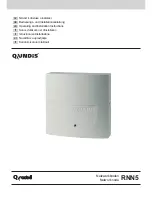
Installing SFP and SFP+ Modules
Some switch models support SFP modules, SFP+ modules, or both. The
SFP
slots support only the SFP
modules. The
SFP+
slots support both SFP and SFP+ modules.
See the switch release notes on Cisco.com for the list of supported SFP modules. Use only Cisco SFP modules
on the switch. Each Cisco module has an internal serial EEPROM that is encoded with security information.
This encoding provides a way for Cisco to identify and validate that the module meets the requirements for
the switch.
For information about installing, removing, cabling, and troubleshooting SFP modules, see the module
documentation that shipped with your device.
Installing an SFP or SFP+ Module
Before You Begin
When installing SFP or SFP+ modules, observe these guidelines:
•
Do not remove the dust plugs from the modules or the rubber caps from the fiber-optic cable until you
are ready to connect the cable. The plugs and caps protect the module ports and cables from contamination
and ambient light.
•
To prevent ESD damage, follow your normal board and component handling procedures when connecting
cables to the switch and other devices.
Removing and installing an SFP or SFP+ module can shorten its useful life. Do not
remove and insert any module more often than is absolutely necessary.
Caution
Class 1 laser product. Statement 1008
Step 1
Attach an ESD-preventive wrist strap to your wrist and to a bare metal surface.
Step 2
Find the send (TX) and receive (RX) markings on the module top.
On some SFP or SFP+ modules, the send and receive (TX and RX) markings might be replaced by arrows that show the
direction of the connection.
Catalyst 3560-CX and 2960-CX Switch Hardware Installation Guide
43
Switch Installation
Installing SFP and SFP+ Modules
















































